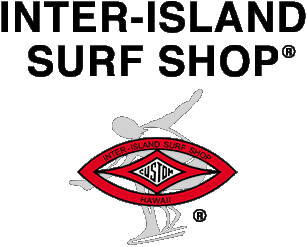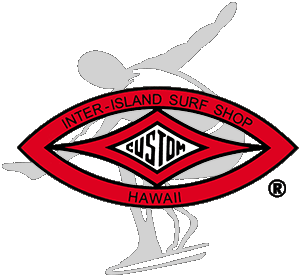John Montgomery Lind
December 7, 1913 – October 23, 2010
A Celebration of Life • Scattering of ashes
Waikiki Yacht Club, Honolulu, Hawaii November 11, 2010
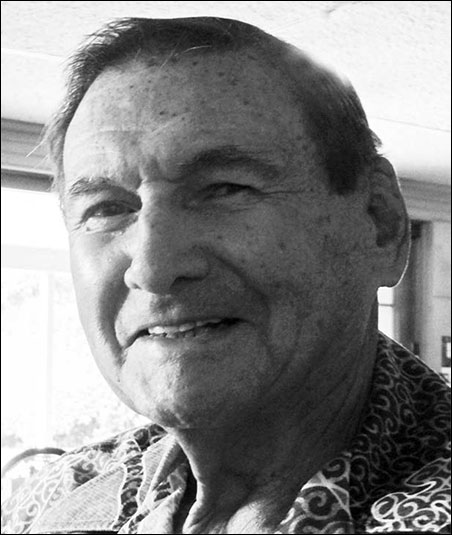
John Lind lived a long and full life of nearly 97 years, which we gather together to celebrate today.
John was born in Berkeley, California, the son of Scottish immigrants. His family moved south to Long Beach when he was 5 years old, and he grew up in that oceanfront community. Family photographs show he was at home in the ocean from an early age. He was active in Sea Scouts and Junior Lifeguards, and was named Captain of the Long Beach Junior Lifeguards in 1931 by the legendary Lifeguard Captain Roy “Dutch” Miller, who headed the lifeguard service from 1922--1966.
John also had a strong work ethic, delivering the Long Beach Press--Telegram newspaper by the time he was 12, and adding the Los Angeles Times morning edition as a second route by the time he was 15.
In 1928, John entered Woodrow Wilson High School. He struggled at times as a student, but excelled in sports. In his senior year took the gold medal in the mile at the 8th Annual Coast League track and field championships. One newspaper reported: “ Lind’s victory fell like a bomb among the Coast League schools.” Another said: “That beautiful stride of Lind’s is greatly feared by many of the best milers in Southern California.”
After his high school graduation at the beginning of 1932, John got a job on the crew of a Grace Line freighter plying a route down through the Panama Canal and up the east coast.
The next year, he landed a job with Dohrmann Hotel Supply Company, the beginning of a 66--year career in the hotel & restaurant supply business.
He had started surfing after being introduced to the sport by friends in the Junior Lifeguards. It wasn’t long before he applied his energy and sales skills to the new sport. In 1934, he joined the Long Beach Junior Chamber of Commerce, then organized the Long Beach Surf Club. In 1938, the two groups cooperated to put on the 1st National Surfing Championships in Long Beach.
And when a position opened up in Dohrmann’s office in Honolulu, John jumped at the chance to move to the islands. He arrived in Honolulu on May 1, 1939, with two surfboards, a suitcase, and a trunk stuffed in a new Dodge Club Coupe.
He definitely hit the ground running. Within a year, he had helped to found the Hawaii Surfing Association and married Helen, who was then teaching at the University of Hawaii. Their 70th anniversary was last December.
The rest is history. John left Dorhmann and, in 1959, started his own firm, Honolulu Restaurant Supply Co., which he operated for 40 years until his retirement at the end of 1998 at age 85.
Just a few years ago, John sat down and made a long list of accomplishments. It is quite a record.
- Long Beach Surf Club, co--founder and life member
- Hawaii Surfing Association, co--founder and past president
- Waikiki Surf Club, co--founder, first president, life member
- Makaha International Surfing Championships, co--founder
- Hawaii Canoe Racing Association, past president
- Honolulu Commercial Club, past president
- Mercury Business Club, past president
- International Geneva Association, past president
- Honolulu Restaurant Supply Co., founder and president
- Outrigger Canoe Club, past member
- Central YMCA, past board member
- Hawaii Junior Chamber of Commerce, past member & director
- Honolulu Police Reserves, past member
- Keys & Whistles, police reserves honorary group, past president
In his own recollection of the founding of the annual Molokai-- Oahu canoe race in 1952, he described his extraordinary involvement during a key period of Hawaii history. “On a personal note, I feel as close to this event as any one could be. In 1952 I was serving as president of the Waikiki Surf Club, president of the Hawaii Canoe Racing Association, chairman of the aquatics committee of the Junior Chamber of Commerce Oldtimers, sponsor of the first Molokai--Oahu race, and was busy organizing the first International Surfing Championships at Makaha in conjunction with the Waianae Lions Club. And, at the same time, I was manager of a mainland hotel and restaurant supply company that required at least ten hours days, usually seven days a week.”
Mahalo to the Waikiki Surf Club and the Waikiki Yacht Club for their assistance in making today’s celebration possible.
![]()

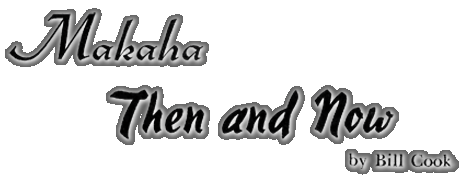
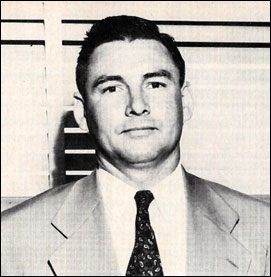
John M. Lind - 1965
A skinny 16-year-old kid stood on a California beach 35 years ago and watched a surfer skim along on a wave. From that moment on, he has been in love with the sport.
The kid was John M. Lind, now 51 years old, a successful Honolulu businessman and generally regarded as the father of the famed Makaha International Surfing Championships. The 1964 meet--the 12th--has attracted more than 400 surfers. The annual Makaha event has become the biggest thing in the surfing world. ABC-TV's Wide World of Sports will film the meet again this year to further spread the word about THE surfing event.
No one man could have made the Makaha championships such a success, yet Lind is the first to point out that it has required the all-out effort of many members of the Waikiki Surf Club, sponsors of the meet, plus a lot of help from other sources. Despite the modesty of the big, friendly Lind, his personality, drive and vision are inextricably woven into the history of the Makaha International Championships.
Sitting in his slightly cluttered office at Honolulu Restaurant Supply Company, Lind unfolded the story of his love of surfing and the history of surfdom's top competitive meet.
Lind is a native of Long Beach, California. After his teenage discovery of surfing, he turned his energy to boosting the sport and played an important role in planning a successful international surfing meet there in 1938. He is in Hawaii now because of his love of the sport. At the bottom of a business letter to his employer in 1938, he mentioned that he would be happy to fill any vacancy that might ever exist in Hawaii. That postscript resulted in his transfer here in 1939.
Shortly after Lind arrived in Honolulu, he helped organize the Hawaii Surfing Association. "I was 25 and full of energy," he recalled.
In 1947, he spearheaded the formation of the Waikiki Surf Club. "Our first major project was the Diamond Head Surfboard Paddle meet, which was usually held on the Sunday between Christmas and New Year's," he said. "We were always looking for good projects. In 1952, the Waianae Lions Club requested our club to send out a speaker to discuss formation of a Waianae surf club."
"I went out to talk to them. I remember it was a dinner meeting at 6 p.m. While I waited for the meeting to start, I looked out and saw the surf booming. What a thrill it would be to see a line of surfers out there, I thought. So, when I got up to talk, I suggested a Makaha International Surfing Championship meet."
Lind's enthusiasm filled his tiny office, and even an incessantly ringing telephone and a secretary flitting in and out couldn't break the vision of the magnificent 20 to 25-foot waves crashing into the shore at Makaha.
"The Lions seemed interested, but then I didn't hear from them for two weeks. The more I thought about a Makaha meet, the more enthused I was about it. I called them back and told them that if they weren't going to do anything about it, then maybe the Waikiki Surf Club would take it over as a project. They called back a few days later and proposed a joint sponsorship-the Lions handling the beach events. and the Waikiki Surf Club taking over the water events. That's the way it got started."
Of course, there were the problems of financing and assistance for such an event, even if the initial meet was far smaller than the Makaha meets of more recent years. And while it was a "Mainland haole" who dreamed up the Makaha International Surfing Championships, Honoluluans gave their kokua.
Lind visited Capital Investment Company, owner of much of the land in the Makaha area. Financier Chinn Ho responded with a $500 check. His generosity has continued throughout the years as he wisely evaluated the Makaha meet as an excellent device to give the area publicity and popularity. The Honolulu Star-Bulletin predicted in an editorial that "there will be a good crowd lining the shore tomorrow for the opening of the big event." It added, "Best of luck to all-and good waves."
The Honolulu Police Department was on hand for the initial meet to handle the traffic which did develop, just as the editorial writer predicted it would.
The second annual meet also was jointly sponsored by the Waianae Lions and the Waikiki Surf Club, but it was the last time for the dual arrangement. "On the third year, right out of the clear blue, the Lions told us they were taking over the complete project," Lind recalled.
"The Waikiki Surf Club's feathers were ruffled." An emergency meeting was called and attorneys were brought in. The upshot of it all was that the Lions pulled out and the Waikiki Surf Club has been going it alone since.
Members of the Waikiki Surf Club won't soon forget the back-breaking work of the earlier meets when there were no restroom facilities. They had to dig trenches and build outhouses. Wallace Froiseth, present Waikiki Surf Club president and general chairman of the 1964 meet, points out that problems still exist.
Froiseth, 45, remembers that the first meet required just over a month of preparations. He was in charge of water events that year. "But now it's almost a year round job. It's getting so big that it's sort of scaring us. We didn't really think it would get so big, although we wanted it to."
Although the meet now is truly an international affair, it really wasn't at the beginning. Its founders. always had an international affair in mind and sent out invitations beyond Hawaii's shores the first year. But it was several years before any entries were registered from places other than Hawaii and the Mainland. Now entries pour in from such distant points as Lima, Peru, and Australia.
Members of the Waikiki Surf Club won't forget soon the diplomatic problems arising from the four Aussie surfers who stowed away to get here. Nor will they soon get over the embarrassment of the surfboard thefts from a number of star Australian surfers, including a past champion. But the remarkable thing about the meet is that there have not been more problems. From the beginning, Lind and other Waikiki Surf Club leaders have done their utmost to give it polish.
For the first meet, Lind called in his friend from the Santa Monica, Calif., lifeguards, Preston Peterson - a top organizer of surfing meets. "We wanted him to help us give it that professional touch," Lind said. Incidentally, it was Peterson who was surfing off a California beach 35 years ago when the then 16-year old Lind was first attracted to the sport.
One problem, apparently without solution, is the complaints about the judging, which is under the direction of Froiseth. There have been charges through the years that the judging has not been impartial. Froiseth denies this vehemently. "Our judges have hours and hours of experience and I feel they're doing a very fair and impartial job. As long as you have losers you're going to have criticism," he said.
Some losing surfers have contended that if it is to be called an international meet, it should have international judges. Froiseth points out that he does not object to international judges if any were available who knew surf conditions here. "I wouldn't dare use a foreign judge unless he was experienced with our surf and all the latest tricks and styles. You've got to remember that we're looking for an all-around surfer, and many people don't seem to understand this. We want to come up with a good hot-dogger and a good big surfer ... an all-around champion, not just a specialist," Froiseth said. "Just having international judges doesn't make it an international meet," he said.
Even if the meet might have had a shaky beginning and even if there have been problems, no one disputes that it now is a top-rate affair. The Hawaii Visitors Bureau, perhaps a little slow in giving the meet the recognition it deserves, now is indicating it will lend the Makaha championships healthy support.
Lind and Froiseth think the meet is such a boost to Honolulu and Hawaii that it should have the full backing of the State of Hawaii and the City and County of Honolulu. But Lind jealously guards the Waikiki Surf Club's rights to the meet. Regardless of what support might be given, he wants to be sure the control stays in the hands of the club.
Finances aren't nearly as serious a problem now as they were in the beginning, especially since ABC-TV entered the picture two years ago. Waikiki Surf Club has a three-year contract with the network, which pays the club more than $6,000 per year for the television rights.
"All the money goes into our building fund," Lind said. "We're a club without a home and we hope to build a clubhouse some day." He emphasized that no club member is receiving pay. And he thinks the club can continue to sponsor the meet without hiring fulltime paid help.
"We're getting so much help from so many people now," he said. But he admits putting on the annual classic is a strain, particularly on the general chairman. "Two of our general chairmen in past years suffered nervous disorders after the meet. One of them walked off the day of the big meet," he recalled.
What is the future of the Makaha International Surfing Championships? "Unlimited," Lind quickly replies. "We'll continue to grow." Lind envisions the growth of the meet keeping pace with the growth of the Makaha area, which developers are planning to build into a "second Waikiki."
"It's got more than Waikiki or Kaanapali on Maui," Lind said. "There are waterfalls, mountains, a valley, fabulous beaches, marlin jumping offshore. "Makaha ultimately will become the mecca of the tourist industry."
And the Makaha meet? Lind feels it will remain THE surfing event, because Hawaii's surf is the best. And besides, Hawaii is the birthplace of surfing.
